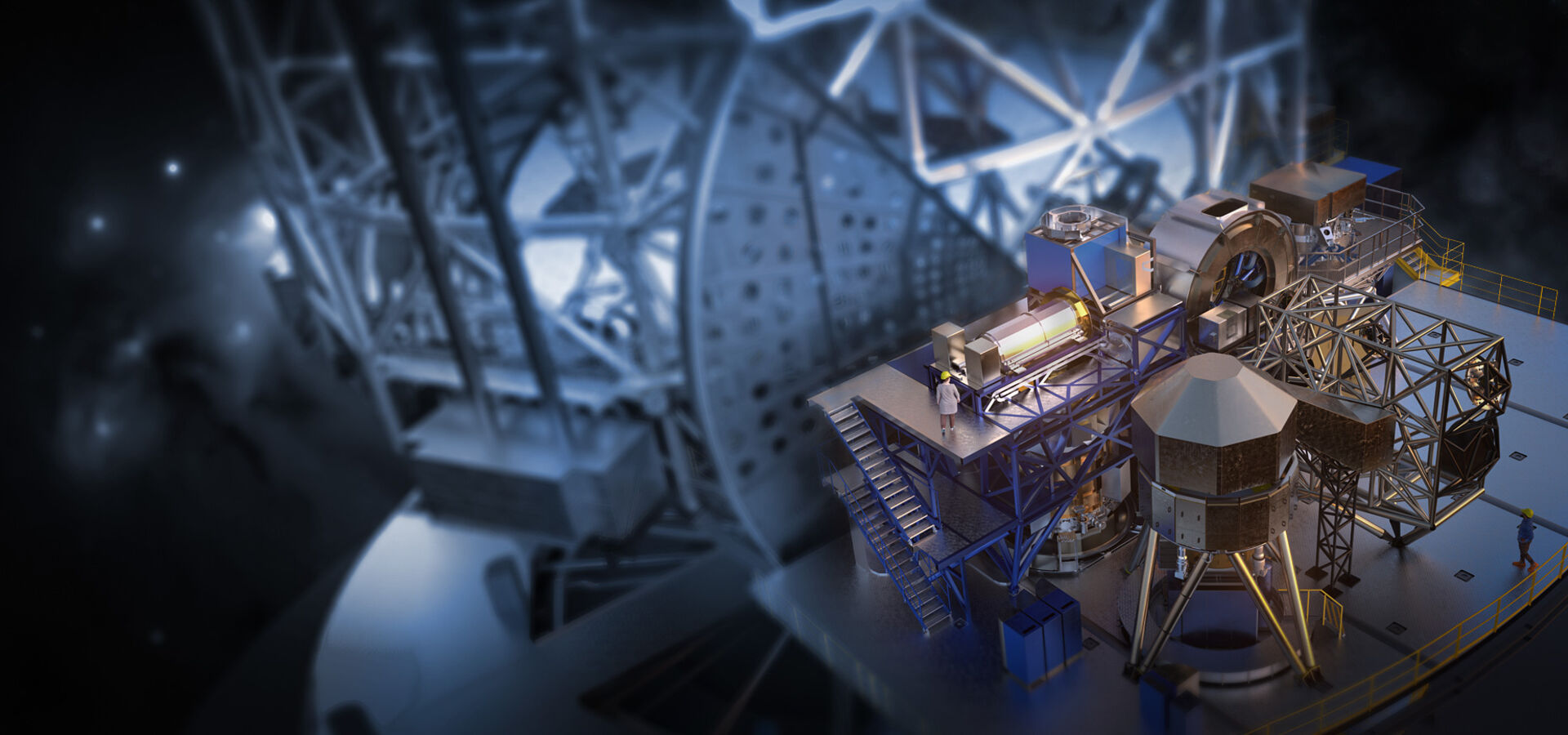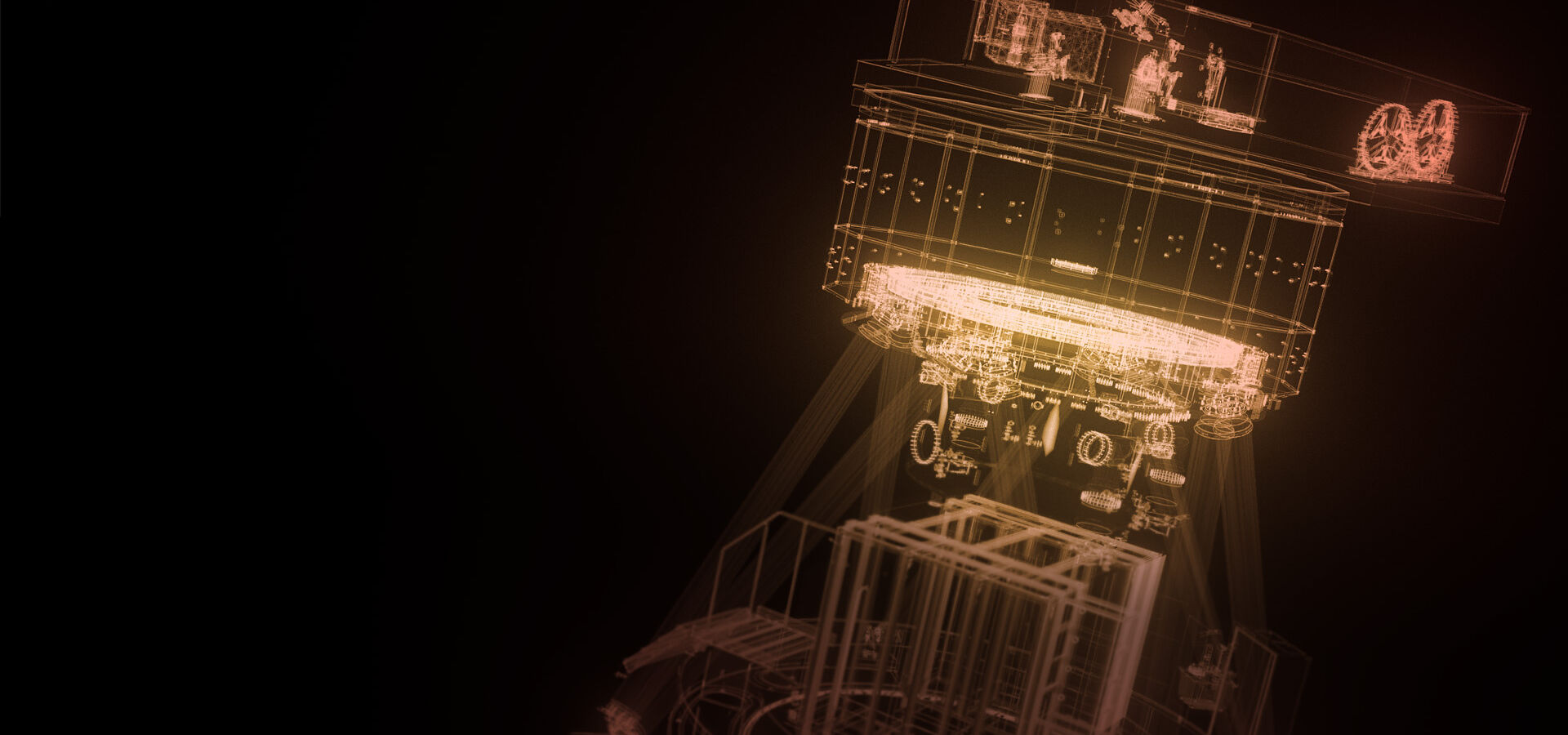
European
Southern
Observatory


A first-generation ELT instrument, MICADO will take high-resolution images of the Universe at near-infrared wavelengths. This makes the instrument ideal for identifying exoplanets, but also for resolving individual stars in other galaxies and investigating the mysterious centre of the Milky Way.
A first-generation ELT instrument, MICADO will take high-resolution images of the Universe at near-infrared wavelengths. This makes the instrument ideal for identifying exoplanets, but also for resolving individual stars in other galaxies and investigating the mysterious centre of the Milky Way.
A first-generation ELT instrument, MICADO will take high-resolution images of the Universe at near-infrared wavelengths. This makes the instrument ideal for identifying exoplanets, but also for resolving individual stars in other galaxies and investigating the mysterious centre of the Milky Way.
MICADO will make the most of the giant ELT's full resolution potential to advance many areas of astronomy. Astronomers will use it to image the detailed structure of distant galaxies, study individual stars in nearby galaxies, and — using a coronagraph to block starlight — discover and characterise exoplanets. MICADO will also be a unique powerful tool for exploring environments where gravitational forces are extremely strong, such as close to the supermassive black hole at the centre of our galaxy, the Milky Way.
MICADO will offer astronomers the ability to take images at an unprecedented depth, thanks to the combination of the ELT's large primary mirror and the correction for the blurring effect of the atmosphere that will be provided by the MAORY adaptive-optics system. The instrument’s high-tech features will enable it to go far beyond the capabilities of the best observatories that we have today, including the Hubble Space Telescope, and its sensitivity will be comparable to the James Webb Space Telescope but with six times the resolution.
Meet MICADO, a super-camera for the ELT!
Directly after the Big Bang there was no structure in the Universe, no individual stars, and no galaxies. Discovering how the Universe evolved from this state to the rich population of stars and galaxies that we see today is a key area of astronomical research. To understand galaxy growth, astronomers study the number and type of stars in galaxies at different distances. MICADO's high spatial resolution will allow very small and distant objects to be resolved, allowing astronomers to study the population of stars in galaxies beyond our immediate Galactic neighbourhood.
MICADO will also be well suited to investigating the region surrounding the black hole at the centre of the Milky Way, furthering the work conducted with ESO telescopes since the 1990s that was recognised with the 2020 Nobel Prize in Physics. Astronomers have discovered that there are massive black holes at the centre of many galaxies, and our Galactic home is no exception. A black hole with a mass four million times that of the Sun has been detected by observing its impact on the orbits of nearby stars. Over the past decades, using the highest spatial resolution imagers, astronomers have mapped the motions of these stars with great precision down to a distance of just 25 light days — or 648 billion kilometres — from the central black hole. MICADO will be able to take us even closer: to within five light-days.
It is not just the instrument's high spatial resolution that will enable such research, but also the fact that it is sensitive to infrared wavelengths that can penetrate the dust that shrouds the centre of the Milky Way. These observations will allow astronomers to test the theory of general relativity thanks to the extreme gravitational forces present at the Galactic Centre.
MICADO will work with the ELT's adaptive-optics module, MORFEO, to reach its ambitious science goals. The instrument will offer astronomers a large selection of filters for different types of imaging, including high contrast imaging and mode and single-slit spectroscopy. It will be housed in a cryostat to keep it cool so that it can work effectively at near-infrared wavelengths.
The design of MICADO was driven by a desire for high sensitivity, resolution, astrometric accuracy, and wide wavelength coverage spectroscopy. Offering almost a full arcminute-squared field-of-view with 4 mas pixels to sample the diffraction limit of the ELT, MICADO takes advantage of the wide-field correction and uniform point spread function offered by the multi-conjugate adaptive optics (MCAO) module, MORFEO. A second, finer, plate scale (1.5 mas) will be used to help MICADO reach challenging requirements on astrometric precision (50 μas requirement). In addition to a large number of broad and narrow band filters for imaging (up to 30) covering the wavelength range 0.8–2.45 μm, MICADO also offers a wide-band spectroscopic mode for compact objects. In single-slit spectroscopy, MICADO covers this wavelength range with two exposures at spectral resolving powers between 10,000 and 20,000. In common with the other early ELT instruments, it will have a coronographic capability to block starlight so that dimmer objects close to these stars — exoplanets, for example — can be seen more easily. A second adaptive-optics mode, single-conjugate adaptive optics (SCAO) will be provided by MICADO and MORFEO. This mode is particularly suited to observations with the coronagraph, as it will provide excellent image quality over a smaller field of view. Since MICADO is designed to observe near-infrared wavelengths, the instrument will be housed in a cryostat and cooled to 80 K using liquid nitrogen.
Light from the telescope will enter the top of the MICADO housing. In SCAO mode, light at visible wavelengths will be selected and directed to a wavefront sensor. The real time computer will calculate the corrections to be applied to the ELT's adaptive mirror (M4) to provide a sharp image. In MCAO mode, the beam will pass into the wavefront sensing module. Three stars needed to provide signals to the telescope M4 and the two additional deformable mirrors in MAORY are selected by pick-off mirrors from a patrol field outside the scientific field of view of MICADO.
The near-infrared part of the beam will always pass into the cryostat. The infrared beam will then be collimated, filtered depending on the wavelength requirements of the astronomical observations being carried out, and passed through one of four exchangeable sets of optical components. The optics required to provide the MICADO narrow-field mode will be fixed; by rotating the Main Selection Mechanism wheel, the astronomer may choose between the wide-field mode optics or the spectrograph optics (including the dispersion gratings). There will also be a set of pupil-viewing optics for testing and checking that MICADO remains aligned with the telescope. Finally, an image of the astronomical field being observed will be formed on a 3 x 3 array of near-infrared sensitive detectors. Each of the nine state-of-the-art detectors will have 4096 x 4096 pixels, each pixel 15 μm x 15 μm in size.
Wavelength
0.8–2.4 μm
Field-of-view
50.5" x 50.5" (4 mas pixels); 18" x 18" (1.5 mas pixels)
Filters
IYJHK broad band + medium and narrow band filters
Relative astrometry
50 µas (10 µas goal)
Contrast requirement
1x10-4 at 100 mas; 1x10-5 at 500 mas
Spectral resolution
< 20,000
Simultaneous spectral range
1.45–2.46 μm; 0.84–1.48 μm
Slit width
16 mas
Slit length
3 arcsec
Tool to simulate instrument observations
Description of the characteristics of the instrument required by the science case
The MICADO project is managed by an international consortium composed of research institutes from six different countries.
MICADO is being designed and built under the leadership of the Max Planck Institute for Extraterrestrial Physics (MPE) by a consortium of partners in Finland, Germany, France, the Netherlands, Austria and Italy, together with ESO. In addition to MPE, the MICADO consortium consists of the Max Planck Institute for Astronomy (Germany), the University Observatory Munich (Germany), the Institute for Astrophysics in Göttingen (Germany), NOVA (Netherlands Research School for Astronomy, represented by the University of Groningen, the University of Leiden, and the NOVA optical/infrared instrumentation group based at ASTRON), INAF, CNRS/INSU (the National institute For Earth Science and Astronomy of the French National Centre for Scientific Research, represented by the LESIA Space and Astrophysics Instrumentation Research Laboratory at Paris Observatory, the GEPI Galaxies, Stars, Physics and Instrumentation Laboratory at Paris Observatory, the UTINAM Universe, Time-Frequency, Interfaces, Nanostructures, Atmosphere-Environment and Molecules Institute, the LCF Charles Fabry Laboratory at Institut d’Optique Graduate School, and the IP2I Institute of Physics of 2 Infinites), A* (an Austrian partnership represented by the University of Vienna, the University of Innsbruck, the University of Linz, the Johann Radon Institute for Computational and Applied Mathematics at the University of Linz, and the Austrian Academy of Sciences), FINCA (the Finnish Centre for Astronomy with ESO), and the University of Turku (Finland).
Principal Investigator
Ric Davies (Max Planck Institute for Extraterrestrial Physics, Germany)
Project Scientist
Eline Tolstoy (University of Groningen, The Netherlands)
Project Manager
Eckhard Sturm (Max Planck Institute for Extraterrestrial Physics, Germany)
ESO Project Engineer
ESO Project Scientist
ESO Project Manager